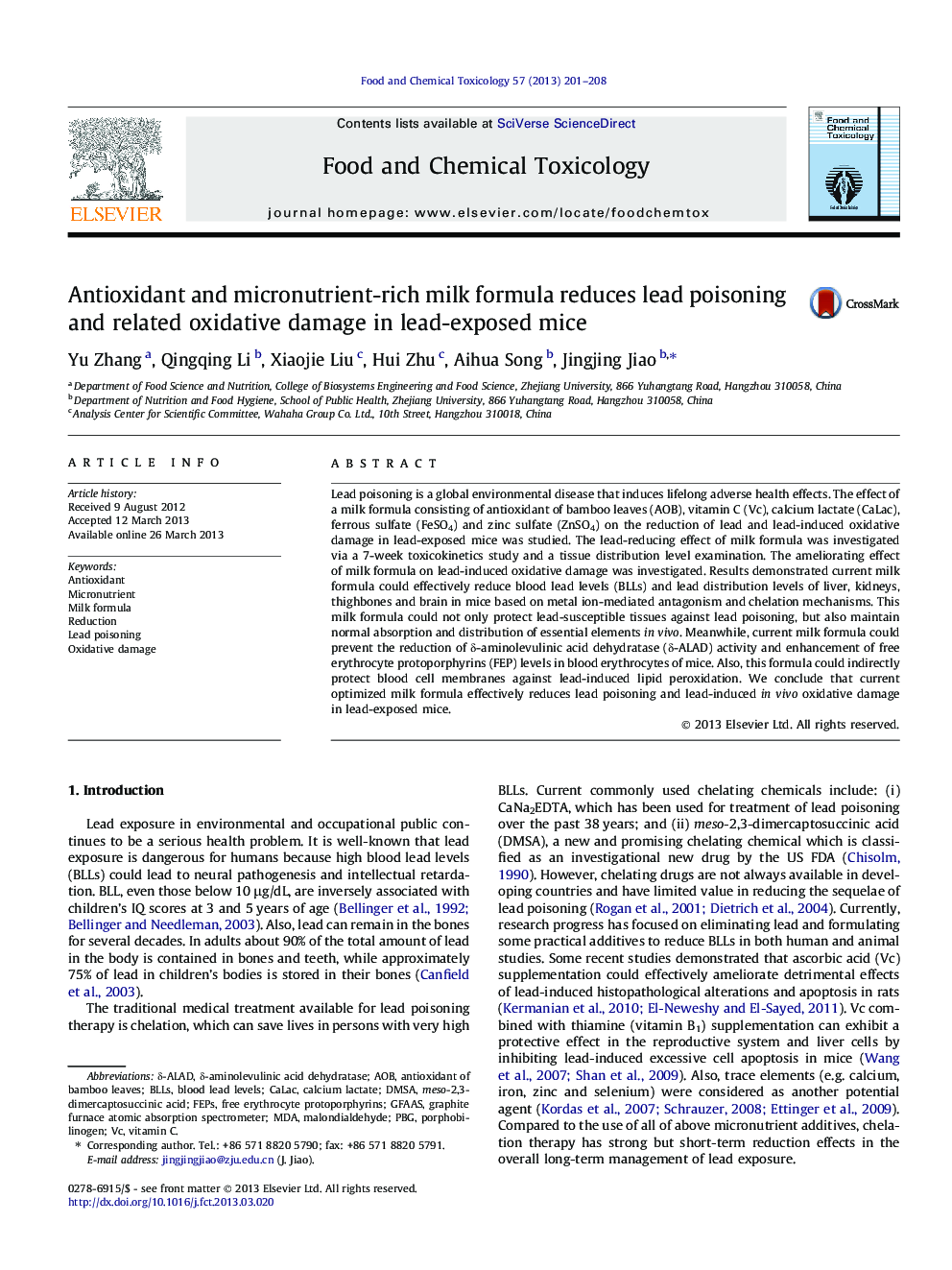| Article ID | Journal | Published Year | Pages | File Type |
|---|---|---|---|---|
| 5852105 | Food and Chemical Toxicology | 2013 | 8 Pages |
â¢Current milk formula could effectively reduce blood lead levels.â¢The milk formula could also reduce lead distribution levels of liver, kidneys, thighbones and brain in mice.â¢This milk formula maintains normal absorption and distribution of essential elements calcium, iron and zinc in vivo.â¢This formula could prevent lead-induced oxidative damage.
Lead poisoning is a global environmental disease that induces lifelong adverse health effects. The effect of a milk formula consisting of antioxidant of bamboo leaves (AOB), vitamin C (Vc), calcium lactate (CaLac), ferrous sulfate (FeSO4) and zinc sulfate (ZnSO4) on the reduction of lead and lead-induced oxidative damage in lead-exposed mice was studied. The lead-reducing effect of milk formula was investigated via a 7-week toxicokinetics study and a tissue distribution level examination. The ameliorating effect of milk formula on lead-induced oxidative damage was investigated. Results demonstrated current milk formula could effectively reduce blood lead levels (BLLs) and lead distribution levels of liver, kidneys, thighbones and brain in mice based on metal ion-mediated antagonism and chelation mechanisms. This milk formula could not only protect lead-susceptible tissues against lead poisoning, but also maintain normal absorption and distribution of essential elements in vivo. Meanwhile, current milk formula could prevent the reduction of δ-aminolevulinic acid dehydratase (δ-ALAD) activity and enhancement of free erythrocyte protoporphyrins (FEP) levels in blood erythrocytes of mice. Also, this formula could indirectly protect blood cell membranes against lead-induced lipid peroxidation. We conclude that current optimized milk formula effectively reduces lead poisoning and lead-induced in vivo oxidative damage in lead-exposed mice.
